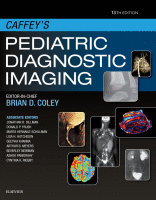Physical Address
304 North Cardinal St.
Dorchester Center, MA 02124

You’re Reading a Preview Become a Clinical Tree membership for Full access and enjoy Unlimited articles Become membership If you are a member. Log in here

Because of the large variety of human hearts in nature, a standardized approach and nomenclature is needed to understand and describe cardiac anatomy and physiology in the setting of congenital heart disease. The most widely used approach is called the…

Cardiac Development The major task in cardiac development is to form a four-chambered heart that functions in a coordinated fashion from a straight tube that functions merely by peristalsis. Cardiac development can be thought of as proceeding along various phases:…

Overview The diaphragm is a dome-shaped musculofibrous membrane that separates the thoracic and abdominal cavities and performs an important respiratory function. The diaphragm has a fibrous portion centrally (i.e., a central tendon) surrounded by a peripheral muscular portion. Major structures…

The pleura is a serous membrane consisting of two layers, the visceral and the parietal pleura. The parietal pleura covers the inner aspect of the chest wall and the diaphragm. The visceral pleura is strongly adherent to the surface of…

The chest wall provides support and protection to the various thoracic vascular and nonvascular structures. In addition, it allows the important physiologic motion of the lungs and airways. The chest wall is less rigid and more cartilaginous in children than…

A variety of congenital and developmental anomalies, inflammatory and infectious diseases, and benign and malignant neoplasms occur in the mediastinum in the pediatric population. Up-to-date knowledge and a practical diagnostic approach combined with a clear understanding of the characteristic imaging…

Many systemic diseases of childhood involve the pulmonary parenchyma. The pulmonary manifestations may in fact prompt the patient or parents to seek medical attention and frequently a chest radiograph is obtained early in the illness. Therefore the radiologist can play…

The pediatric diffuse lung disorders, also known as childhood interstitial lung diseases (chILDs), comprise a rare and heterogeneous spectrum of progressive and often lethal pulmonary pathology. They are characterized by otherwise unexplained respiratory signs and symptoms, hypoxemia, and widespread pulmonary…

Pulmonary neoplasm is much less common in children than in adults. Affected children may present clinically with respiratory symptoms, or a pulmonary neoplasm may be detected incidentally on a chest radiograph in an asymptomatic child. In a recent series of…